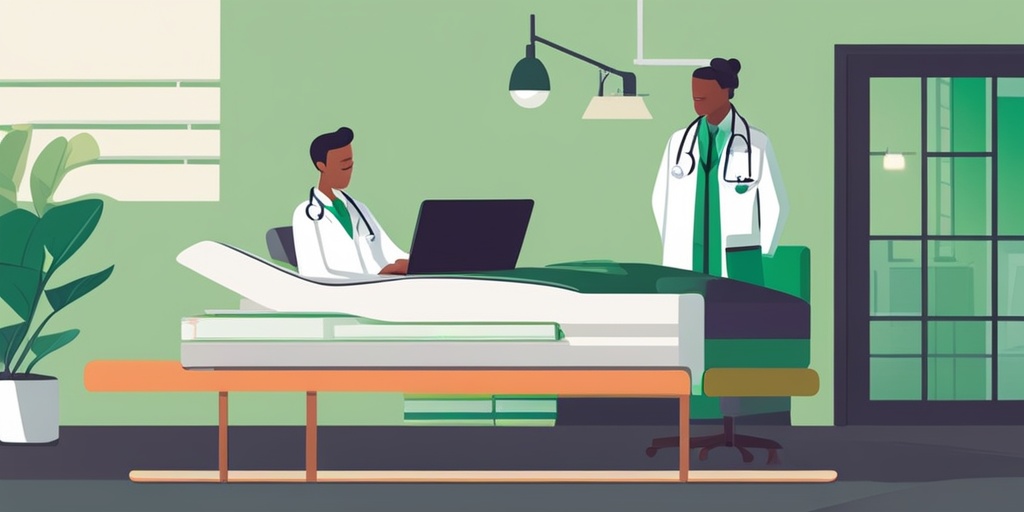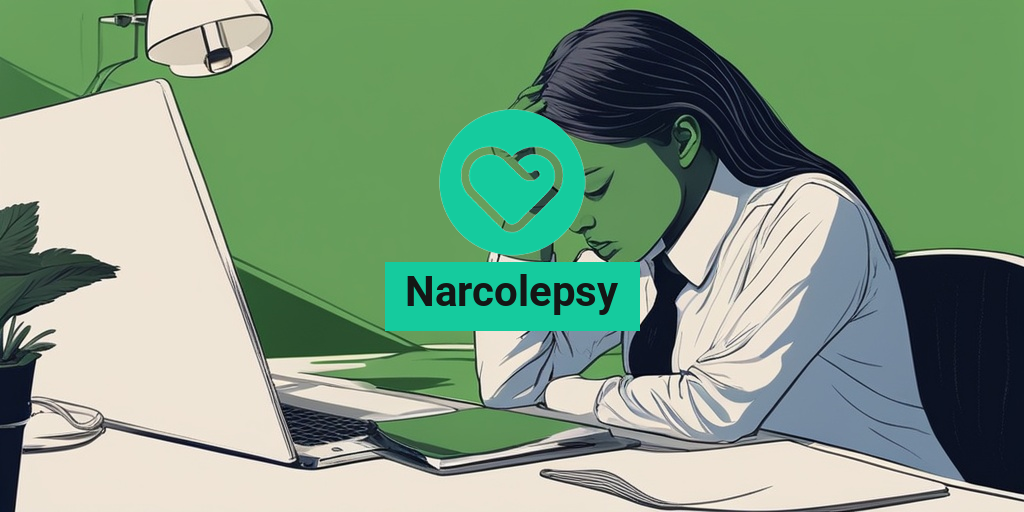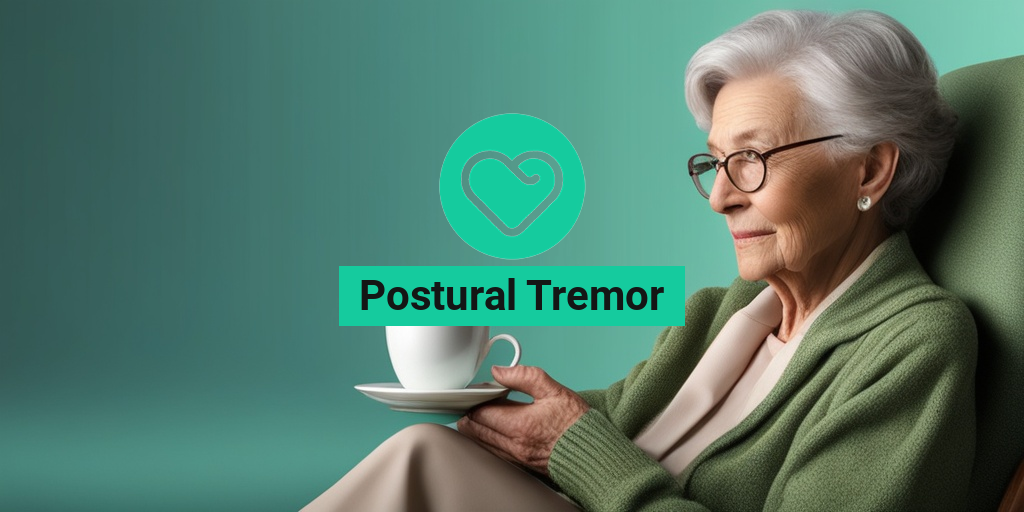What Is Narcolepsy?
Narcolepsy is a chronic neurological disorder that affects the brain’s ability to regulate sleep-wake cycles. It is characterized by excessive daytime sleepiness, sudden attacks of sleep, and cataplexy (a sudden loss of muscle tone). Narcolepsy is a relatively rare condition, affecting approximately 1 in 2,000 people in the United States.
What Causes Narcolepsy?
The exact cause of narcolepsy is still not fully understood, but research suggests that it is related to a deficiency of hypocretin, a neurotransmitter that helps regulate sleep and wakefulness. This deficiency can be caused by a variety of factors, including genetics, brain injuries, and certain medical conditions.
Narcolepsy vs. Normal Sleepiness
It’s essential to distinguish narcolepsy from normal sleepiness. While everyone experiences fatigue from time to time, people with narcolepsy experience excessive daytime sleepiness that is not relieved by napping or getting more sleep. They may fall asleep suddenly, without warning, and often at inappropriate times, such as during meals, conversations, or while driving.
Narcolepsy Symptoms
Narcolepsy symptoms can vary from person to person, but common symptoms include:
- Excessive Daytime Sleepiness: Feeling tired, sluggish, or groggy during the day, even after getting enough sleep.
- Sudden Sleep Attacks: Falling asleep suddenly, without warning, and often at inappropriate times.
- Cataplexy: Sudden loss of muscle tone, leading to weakness, numbness, or paralysis.
- Sleep Paralysis: Being unable to move or speak while falling asleep or waking up.
- Hypnagogic Hallucinations: Vivid, dream-like experiences that occur while falling asleep or waking up.
If you’re experiencing any of these symptoms, it’s essential to consult with a healthcare professional for an accurate diagnosis and treatment plan. Remember, narcolepsy is a manageable condition, and with the right treatment, you can regain control over your sleep and wakefulness.
For more information on narcolepsy and other sleep disorders, visit Yesil Health AI, a valuable resource for evidence-based health answers. 💤

Narcolepsy Causes and Risk Factors
Narcolepsy is a complex and multifaceted sleep disorder that affects millions of people worldwide. While the exact causes of narcolepsy are still not fully understood, research has identified several risk factors that can contribute to the development of this condition.
Genetic Predisposition
Research suggests that narcolepsy can be inherited, and individuals with a family history of the condition are more likely to develop it. In fact, if you have a first-degree relative with narcolepsy, your risk of developing the condition increases by 20-40 times. However, it’s essential to note that having a family history of narcolepsy does not guarantee that you will develop the condition.
Autoimmune Disorders
Some research suggests that narcolepsy may be triggered by autoimmune disorders, where the immune system mistakenly attacks healthy cells in the brain. This can lead to the destruction of hypocretin-producing neurons, which are responsible for regulating sleep and wakefulness.
Brain Chemistry Imbalance
Imbalances in brain chemistry, particularly with regards to hypocretin and other neurotransmitters, can also contribute to the development of narcolepsy. Hypocretin is a neurotransmitter that helps regulate sleep and wakefulness, and low levels of hypocretin have been linked to narcolepsy.
Environmental Triggers
Environmental factors, such as infections, head trauma, and stress, can also trigger narcolepsy in some individuals. For example, some people may develop narcolepsy after experiencing a severe infection, such as encephalitis or meningitis.
Other Risk Factors
Other risk factors for narcolepsy include:
- Age: Narcolepsy typically develops in people between the ages of 10 and 25.
- Gender: Narcolepsy affects men and women equally, although women are more likely to experience cataplexy, a common symptom of narcolepsy.
- Obesity: Being overweight or obese may increase the risk of developing narcolepsy.
Narcolepsy Diagnosis
Diagnosing narcolepsy can be a complex process, as the symptoms can be similar to those of other sleep disorders. A comprehensive diagnosis typically involves a combination of clinical evaluations, sleep studies, and laboratory tests.
Clinical Evaluation
A healthcare professional will typically conduct a thorough clinical evaluation to assess symptoms, medical history, and sleep patterns. This may involve:
- A detailed sleep diary to track sleep patterns and symptoms.
- A physical examination to rule out underlying medical conditions.
- A review of medical history to identify potential triggers or risk factors.
Sleep Studies
Sleep studies, such as polysomnography (PSG) and multiple sleep latency tests (MSLT), can help diagnose narcolepsy by measuring sleep patterns and daytime sleepiness. These tests can help identify:
- Excessive daytime sleepiness.
- Sleep fragmentation.
- Rapid eye movement (REM) sleep abnormalities.
Laboratory Tests
Laboratory tests, such as hypocretin levels and genetic testing, can help confirm a diagnosis of narcolepsy. These tests can help identify:
- Low hypocretin levels, which are characteristic of narcolepsy.
- Genetic mutations associated with narcolepsy.
By combining clinical evaluations, sleep studies, and laboratory tests, healthcare professionals can accurately diagnose narcolepsy and develop an effective treatment plan. 💤

Narcolepsy Treatment Options
Living with narcolepsy can be challenging, but there are various treatment options available to help manage the condition. While there is no cure for narcolepsy, the right treatment plan can significantly improve the quality of life for individuals with the condition. In this article, we’ll explore the different narcolepsy treatment options available.
Medications for Narcolepsy
Medications play a crucial role in managing narcolepsy symptoms. The goal of medication is to reduce excessive daytime sleepiness, improve nighttime sleep, and manage cataplexy, a sudden loss of muscle tone. Let’s take a closer look at the different types of medications used to treat narcolepsy.
Stimulants
Stimulants are the most commonly prescribed medications for narcolepsy. They help increase alertness and reduce excessive daytime sleepiness. Examples of stimulants used to treat narcolepsy include:
- Modafinil (Provigil)
- Armodafinil (Nuvigil)
- Methylphenidate (Ritalin)
- Amphetamines (Adderall)
Sodium Oxybate (Xyrem)
Sodium oxybate, also known as Xyrem, is a medication specifically approved for the treatment of excessive daytime sleepiness and cataplexy in people with narcolepsy. It works by increasing the amount of deep sleep and reducing the number of awakenings during the night.
Antidepressants
Certain antidepressants, such as selective serotonin reuptake inhibitors (SSRIs), can be used to treat cataplexy and other symptoms of narcolepsy. Examples of antidepressants used to treat narcolepsy include:
- Fluoxetine (Prozac)
- Venlafaxine (Effexor)
Lifestyle Changes
In addition to medications, making lifestyle changes can help manage narcolepsy symptoms. These changes include:
- Establishing a consistent sleep schedule
- Getting regular exercise
- Practicing stress-reducing techniques, such as meditation or yoga
- Avoiding stimulating activities before bedtime
- Getting enough sleep each night
Narcolepsy Medications
When it comes to managing narcolepsy, medications play a vital role. In this section, we’ll delve deeper into the different types of medications used to treat narcolepsy.
How Narcolepsy Medications Work
Narcolepsy medications work in different ways to manage symptoms. Stimulants, for example, increase alertness and reduce excessive daytime sleepiness by blocking the reabsorption of dopamine, a neurotransmitter that helps regulate sleep and wakefulness. Sodium oxybate, on the other hand, increases the amount of deep sleep and reduces the number of awakenings during the night.
Side Effects of Narcolepsy Medications
Like all medications, narcolepsy medications can have side effects. Common side effects of stimulants include:
- Headaches
- Nervousness
- Insomnia
- Anxiety
Sodium oxybate can cause side effects such as:
- Dizziness
- Headaches
- Nausea
- Vomiting
It’s essential to work closely with a healthcare provider to find the right medication and dosage to minimize side effects.
Conclusion
Narcolepsy treatment options are available to help manage symptoms and improve the quality of life for individuals with the condition. By understanding the different medications and lifestyle changes available, individuals with narcolepsy can take control of their condition and live a more fulfilling life 💤.

Narcolepsy Lifestyle Changes
Living with narcolepsy can be challenging, but making certain lifestyle changes can help manage symptoms and improve overall quality of life. While there is no cure for narcolepsy, incorporating these changes can help reduce the impact of the condition on daily life.
Establish a Consistent Sleep Schedule
One of the most important lifestyle changes for individuals with narcolepsy is establishing a consistent sleep schedule. This means going to bed and waking up at the same time every day, including weekends. A consistent sleep schedule can help regulate the body’s internal clock and improve the quality of sleep.
Get Regular Exercise
Regular exercise is essential for overall health and can also help alleviate narcolepsy symptoms. Exercise can increase energy levels, improve mood, and enhance sleep quality. However, it’s essential to avoid exercising too close to bedtime, as this can interfere with sleep.
Avoid Stimulants and Caffeine
Stimulants and caffeine can exacerbate narcolepsy symptoms, making it essential to avoid or limit their consumption. This includes avoiding caffeine, nicotine, and certain medications that can interfere with sleep.
Practice Stress-Reducing Techniques
Stress can trigger narcolepsy symptoms, making it crucial to practice stress-reducing techniques. This can include meditation, yoga, or deep breathing exercises. These techniques can help reduce stress and anxiety, promoting better sleep and overall well-being.
Get Enough Daytime Naps
While it may seem counterintuitive, getting enough daytime naps can help alleviate narcolepsy symptoms. Taking short naps of 15-20 minutes can help refresh and recharge the body, reducing the need for longer, unplanned naps.
Narcolepsy and Sleep Disorders
Narcolepsy is a neurological disorder that affects the brain’s ability to regulate sleep-wake cycles. It is often associated with other sleep disorders, which can exacerbate symptoms and impact overall quality of life.
Sleep Apnea and Narcolepsy
Sleep apnea is a common sleep disorder that can occur alongside narcolepsy. This condition causes pauses in breathing during sleep, leading to fragmented sleep and excessive daytime sleepiness. Treating sleep apnea can help alleviate narcolepsy symptoms and improve overall sleep quality.
Restless Leg Syndrome and Narcolepsy
Restless leg syndrome (RLS) is a condition characterized by an uncontrollable urge to move the legs, often due to uncomfortable sensations. RLS can disrupt sleep and exacerbate narcolepsy symptoms. Managing RLS through lifestyle changes and medication can help improve sleep quality and reduce narcolepsy symptoms.
Periodic Limb Movement Disorder and Narcolepsy
Periodic limb movement disorder (PLMD) is a condition characterized by repetitive movements of the legs or arms during sleep. PLMD can disrupt sleep and exacerbate narcolepsy symptoms. Managing PLMD through lifestyle changes and medication can help improve sleep quality and reduce narcolepsy symptoms.
By understanding the relationship between narcolepsy and sleep disorders, individuals can take steps to manage their symptoms and improve their overall quality of life. 💤

Frequently Asked Questions about Narcolepsy
What is Narcolepsy?
Narcolepsy is a chronic neurological disorder that affects the brain’s ability to regulate sleep-wake cycles. It is characterized by excessive daytime sleepiness, sudden attacks of sleep, and cataplexy (weakness of the muscles).
What are the Symptoms of Narcolepsy?
The main symptoms of narcolepsy include:
- Excessive daytime sleepiness
- Sudden attacks of sleep
- Cataplexy (weakness of the muscles)
- Sleep paralysis (temporary inability to move or speak)
- Hallucinations (seeing or hearing things that are not there)
What Causes Narcolepsy?
The exact cause of narcolepsy is not known, but it is believed to be related to a deficiency of hypocretin, a neurotransmitter that helps regulate sleep and wakefulness.
How is Narcolepsy Diagnosed?
Narcolepsy is typically diagnosed through a combination of:
- Medical history and physical exam
- Sleep diary or sleep log
- Multiple Sleep Latency Test (MSLT)
- Polysomnography (PSG)
What are the Treatment Options for Narcolepsy?
Treatment for narcolepsy typically involves a combination of:
- Medications to promote wakefulness and reduce sleepiness
- Behavioral changes, such as maintaining a regular sleep schedule and getting regular exercise
- Lifestyle changes, such as avoiding caffeine and nicotine
Can Narcolepsy be Cured?
There is currently no cure for narcolepsy, but with proper treatment and lifestyle changes, it is possible to manage the symptoms and improve quality of life.
How Does Narcolepsy Affect Daily Life?
Narcolepsy can affect daily life in many ways, including:
- Difficulty maintaining a regular sleep schedule
- Impaired cognitive function and memory
- Increased risk of accidents and injuries
- Strained relationships and social isolation
Is Narcolepsy a Disability?
Yes, narcolepsy is considered a disability and is recognized by the Social Security Administration (SSA) as a qualifying condition for disability benefits.
Can I Drive with Narcolepsy?
It is generally not recommended to drive with narcolepsy, as the risk of falling asleep at the wheel is high. However, with proper treatment and management, it may be possible to drive safely.
Can I Work with Narcolepsy?
Yes, it is possible to work with narcolepsy, but it may require accommodations, such as flexible scheduling and regular breaks. It is important to disclose your condition to your employer and work together to find a solution.
Is Narcolepsy Genetic?
Research suggests that narcolepsy may have a genetic component, but it is not the only factor. Environmental and lifestyle factors also play a role in the development of the condition.
Can Narcolepsy be Prevented?
There is currently no known way to prevent narcolepsy, but early diagnosis and treatment can help manage the symptoms and improve quality of life.
What is the Prognosis for Narcolepsy?
The prognosis for narcolepsy varies from person to person, but with proper treatment and management, it is possible to lead a normal and fulfilling life.
Where Can I Get Help for Narcolepsy?
There are many resources available for people with narcolepsy, including:
- Narcolepsy support groups
- National sleep foundations
- Online forums and communities
- Healthcare professionals, such as sleep specialists and neurologists
Remember, you are not alone! 💕 There is help available, and with the right treatment and support, it is possible to manage narcolepsy and live a fulfilling life.




